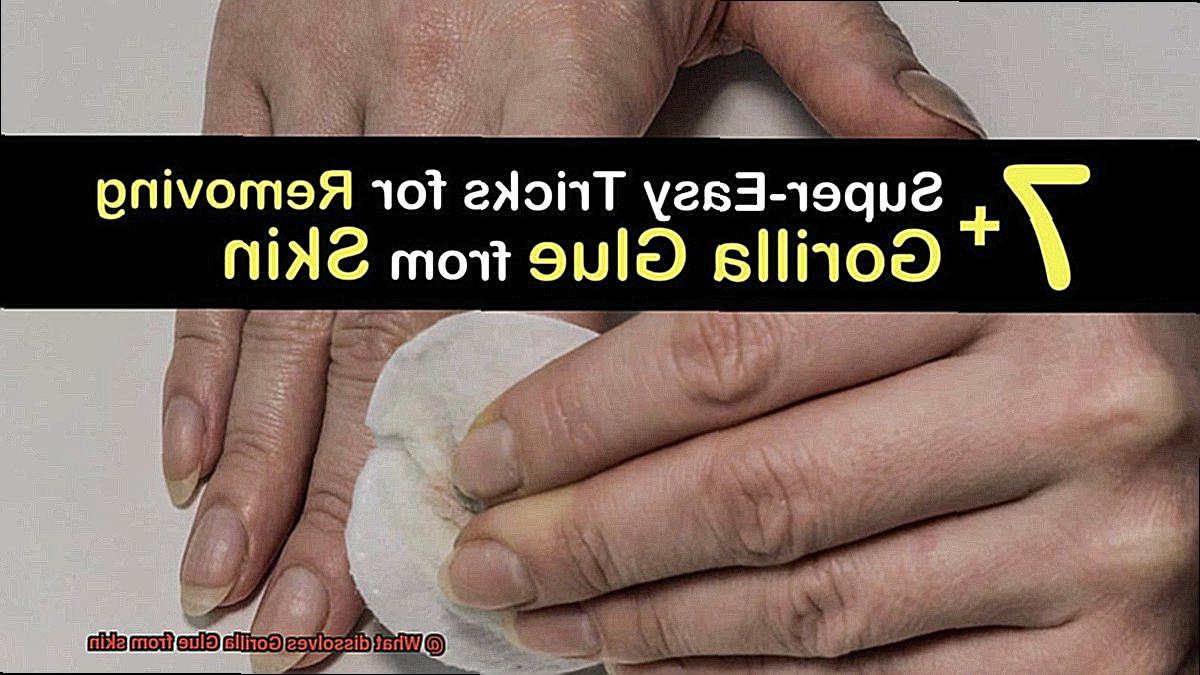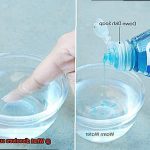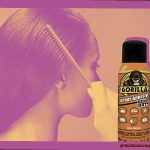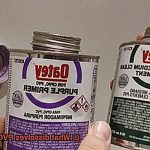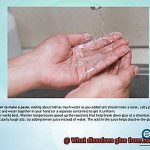We’ve all been there – a clumsy spill or an adhesive mishap that leaves us stuck in a gooey mess. And when it comes to tough adhesives, Gorilla Glue takes the cake with its super-strong and unyielding bond. But fear not, my friend, for I have got your back.
In this blog post, we’re going to tackle the age-old question of how to safely remove Gorilla Glue from your skin. Whether you’re a DIY enthusiast who loves tinkering with projects or just someone who had an unfortunate encounter with this sticky situation, fret not. We’ll explore the most effective methods recommended by experts, ensuring you can bid farewell to those pesky glue remnants and restore your skin to its former glory.
Get ready for a wild ride as we delve into a treasure trove of household items and commercial solutions. With our help, you’ll find the perfect method that suits your needs like a glove (or should I say, like a non-sticky glove). So buckle up and let’s embark on this adventure together – because banishing Gorilla Glue from your skin shouldn’t be a stressful mission but rather an exhilarating quest for freedom.
Acetone: A Powerful Solvent to Dissolve Gorilla Glue from Skin
Contents
- 1 Acetone: A Powerful Solvent to Dissolve Gorilla Glue from Skin
- 2 Oils: Breaking Down the Bond of Gorilla Glue with Moisturizing Properties
- 3 Vinegar: An Acidic Solution for Removing Gorilla Glue from Skin
- 4 Rubbing Alcohol or Nail Polish Remover: Effective in Dissolving Gorilla Glue
- 5 Patience is Key When Attempting to Remove Gorilla Glue from Skin
- 6 Seeking Professional Medical Advice if All Else Fails
- 7 Conclusion
Acetone, the powerful solvent that it is, can truly work wonders when it comes to dissolving Gorilla Glue from skin. But let’s not dive headfirst into this sticky situation without a proper game plan. Here’s the lowdown on how to safely and effectively use acetone to bid farewell to that stubborn glue.
First things first, create a safe haven for your acetone adventure by setting up shop in a well-ventilated area. Acetone packs a punch with its potent odor, so let fresh air be your ally. Crack open a window or crank up a fan to keep the air flowing and the fumes at bay.
Next, gather the necessary arsenal: acetone (of course), cotton balls or a soft cloth, warm soapy water, and moisturizer. These trusty sidekicks will help you navigate this mission like a pro.
With your supplies in hand, it’s time to get down to business. Soak a cotton ball or cloth in acetone and gently rub it over the Gorilla Glue on your skin. Take care not to let even a drop of acetone make its way into your precious peepers or mouth.
Now, here’s where patience becomes your greatest virtue. Acetone needs time to work its magic, breaking down the bond of the glue molecule by molecule. Give it a few minutes to do its thing and watch as the glue begins to loosen its grip.
Once the glue has surrendered to the power of acetone, it’s time to gently remove the dissolved residue. Employ a clean cloth or even your trusty fingertips for this task. Remember, no need for harsh scrubbing; be gentle to avoid any unnecessary irritation.
With the glue banished from your skin, it’s time for a victory rinse. Wash away any remnants of Gorilla Glue with warm soapy water, ensuring that every last trace is gone.
But wait, there’s one more step to ensure your skin is left unscathed. Acetone can be a bit of a drying culprit, so it’s crucial to moisturize the area after the glue has been banished. Grab a gentle moisturizer or lotion and lavish your skin with some much-needed hydration.
Keep in mind, acetone should be handled with caution and used only as directed. If you encounter any discomfort or irritation during your acetone adventure, cease immediately and seek medical advice if necessary.
Oils: Breaking Down the Bond of Gorilla Glue with Moisturizing Properties
When it comes to removing Gorilla Glue from your skin, oils with moisturizing properties offer a gentle and effective alternative to harsh chemicals like acetone. These oils, such as coconut oil, olive oil, almond oil, and baby oil, are not only great for moisturizing your skin but also contain fatty acids that can help break down the adhesive bond of Gorilla Glue.
If you’re ready to say goodbye to that stubborn glue, here’s how you can use oils to dissolve its grip on your skin:
- Choose Your Oil: Coconut oil is a popular choice due to its ability to penetrate the adhesive and loosen its hold. However, other oils like olive oil, almond oil, and baby oil can work just as effectively.
- Apply and Massage: Start by generously applying your chosen oil to the affected area. Gently massage it into the glue, allowing the oil to seep into the adhesive and begin breaking it down. Take a moment to let the oil work its magic.
- Patience is Key: Give the oil some time to do its job. Let it sit on the glue for a few minutes before moving on to the next step. This allows the oil to thoroughly penetrate and weaken the bond.
- Gentle Removal: Using a soft cloth or your fingers, delicately rub the glue off your skin. Avoid applying excessive force or using harsh scrubbing motions, as this can irritate and damage your skin. Gradually loosen the adhesive without causing harm.
- Repeat if Necessary: If there’s still some glue clinging on, don’t worry. Just repeat the process until all traces of Gorilla Glue are completely removed from your skin.
- Cleanse and Refresh: Once you’ve successfully dissolved the Gorilla Glue, cleanse your skin with mild soap and warm water to remove any residue from the oil. This will leave your skin feeling fresh and glue-free.
While oils may not work as quickly as acetone or warm soapy water, they offer a gentler alternative, especially for those with sensitive skin or a preference for natural methods. Keep in mind that using oils requires a little more patience, but the results are worth it.
Vinegar: An Acidic Solution for Removing Gorilla Glue from Skin
Accidents happen, and getting Gorilla Glue on your skin can be quite a sticky situation. Fortunately, vinegar, a household staple with acidic properties, can come to the rescue.
In this article, we will explore how vinegar can be used to effectively remove Gorilla Glue from the skin. Whether you’re a DIY enthusiast or simply wanting to learn about glue removal techniques, this guide will provide you with all the information you need.
The Power of Vinegar:
Vinegar is primarily composed of acetic acid, making it an effective solution for dissolving various substances, including Gorilla Glue. The acidic nature of vinegar reacts with the glue, softening it and eventually causing it to dissolve.
How to Use Vinegar for Glue Removal:
To use vinegar for removing Gorilla Glue from the skin, start by soaking the affected area in a mixture of warm water and vinegar. The warm water helps loosen the glue while the vinegar works to dissolve it. After soaking for a few minutes, gently rub the area with a soft cloth or sponge soaked in vinegar. This further breaks down the adhesive bond and removes any remaining glue.
Patience is Key:
It’s important to note that vinegar may not work instantly and may require multiple applications or longer soaking times for stubborn glue stains. Persistence and patience are crucial when using vinegar as a solution for removing Gorilla Glue from the skin.
Safety Precautions:
While vinegar is generally safe to use on the skin, individuals with sensitive skin may experience irritation or discomfort. It’s recommended to test a small area before applying vinegar to larger areas. After successfully removing the Gorilla Glue, rinse the area thoroughly with water to remove any residual vinegar or glue remnants. Apply a moisturizer or soothing cream to hydrate and soothe the skin.
Professional Advice:
While vinegar can be effective in removing Gorilla Glue from the skin, it may not be suitable for all situations or individuals. If you have concerns or if the glue does not come off easily, it’s advisable to seek professional medical advice.
Rubbing Alcohol or Nail Polish Remover: Effective in Dissolving Gorilla Glue
Rubbing alcohol and nail polish remover are both effective in dissolving Gorilla Glue from the skin due to their high acetone content. Acetone is a powerful solvent that can break down the strong bonds of the adhesive. To effectively remove Gorilla Glue from the skin, follow these steps:
- Gather the necessary materials: You will need rubbing alcohol or nail polish remover (preferably with a high acetone content), cotton balls or cloth, and water.
- Apply the solvent: Soak a cotton ball or cloth with the rubbing alcohol or nail polish remover, ensuring that the affected area is fully saturated.
- Gently rub the glue: Using the soaked cotton ball or cloth, gently rub the glue in circular motions. The acetone in the solvent will begin to dissolve the adhesive, making it easier to remove.
- Repeat if necessary: If the glue does not completely dissolve, apply more of the solvent and continue gently rubbing. Give the acetone time to work its magic and be patient.
- Rinse with water: Once the glue has dissolved, thoroughly rinse the area with water to remove any residue from the solvent.
- Moisturize the skin: Acetone-based solvents can be harsh on the skin, so it is important to moisturize after removing Gorilla Glue. Apply a gentle moisturizer to prevent dryness and promote healing.
- Seek medical assistance if needed: If the glue does not fully dissolve or if you experience any adverse reactions, it is best to seek professional medical assistance. A healthcare provider or dermatologist can provide further guidance on safe and effective methods for removing stubborn Gorilla Glue from the skin.

Patience is Key When Attempting to Remove Gorilla Glue from Skin
When it comes to removing Gorilla Glue from your skin, patience is essential. This powerful adhesive bonds quickly and firmly to surfaces, including skin. Rushing the removal process can result in pain, skin damage, or even further adherence of the glue. So take a deep breath and prepare for a bit of a process.
The first step in removing Gorilla Glue from the skin is to assess the situation and determine if medical attention is required. If the glue is on a sensitive area, such as the eyes or mouth, it is crucial to seek professional help immediately. However, for less severe cases where the glue is on other parts of the body, there are several methods that can be employed to dissolve and remove the adhesive.
One common approach is to use soap and warm water to gently soak and soften the glue. This method requires patience as it may take some time for the glue to loosen and eventually come off. Resist the urge to forcefully pull or scrape at the glued area, as this can cause skin irritation or injuries. Instead, allow the warm soapy water to gradually break down the adhesive bond.
In some cases, soaking the affected area in acetone or nail polish remover can also help dissolve Gorilla Glue. However, caution must be exercised when using acetone as it can be harsh on the skin and may cause dryness or irritation. Use acetone sparingly and in well-ventilated areas. Remember, patience is key when using acetone; it may take some time for the glue to dissolve completely.
Another method that can be tried is applying petroleum jelly or baby oil to the glued area. These substances can help soften the adhesive and make it easier to remove. Once again, patience is required as it may take some time for the glue to break down with this method.
It’s important to note that while these methods can be effective in removing Gorilla Glue from the skin, they may not work instantaneously. It may take multiple attempts and some time for the adhesive to fully dissolve and come off. So don’t get discouraged if it doesn’t happen right away. Rushing the process or using excessive force can lead to skin damage or further adherence of the glue. Therefore, it is essential to remain patient and persistent in the removal process.
If, after several attempts, the glue still won’t budge, it is advisable to seek medical advice or assistance from a healthcare professional. They can provide further guidance on how to safely remove the glue without causing harm to the skin. Remember, your health and safety should always come first.
Seeking Professional Medical Advice if All Else Fails
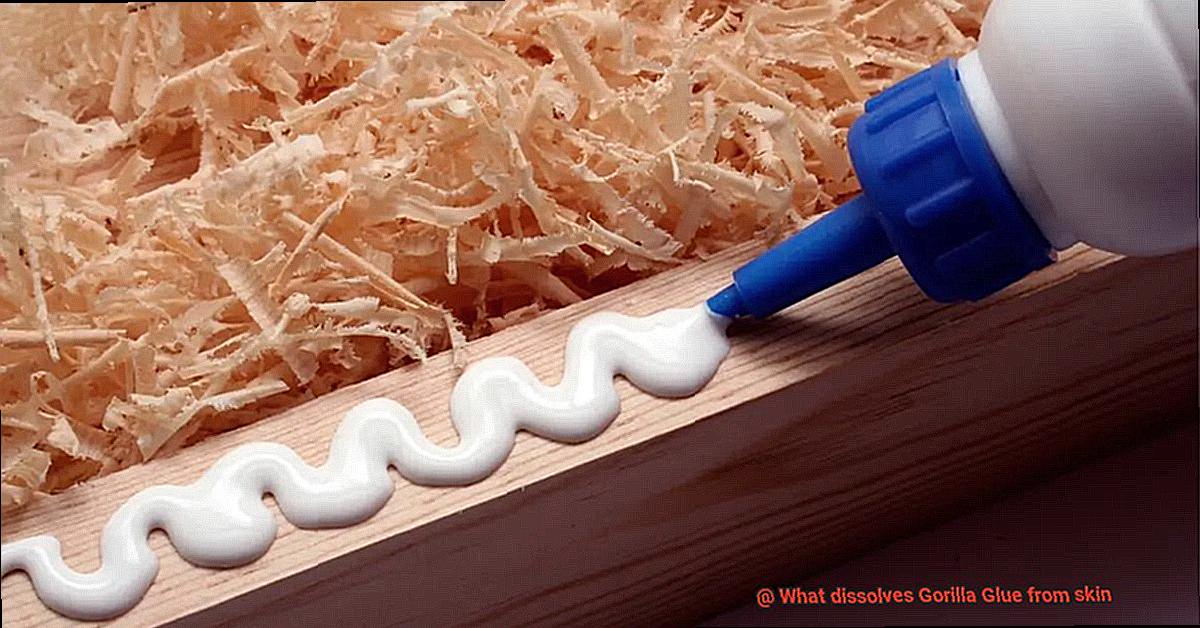
Seeking professional medical advice if all other attempts to remove Gorilla Glue from the skin have failed is crucial for several reasons. Leaving Gorilla Glue on the skin can lead to potential risks and complications that require the expertise of a healthcare professional.
Firstly, attempting to remove Gorilla Glue without professional guidance can cause harm or damage to the skin. Gorilla Glue is a strong adhesive that forms a permanent bond and is not meant to come into contact with the skin. Leaving it on can lead to irritation, inflammation, and discomfort. Seeking medical advice allows a healthcare professional to assess the situation and provide appropriate treatment to alleviate these symptoms.
Moreover, leaving Gorilla Glue on the skin can increase the risk of infection. If the skin is damaged or broken during attempts to remove the glue, bacteria can enter and cause an infection. A healthcare professional can evaluate the affected area for signs of infection and provide necessary treatments such as antibiotics if needed.
Additionally, seeking professional medical help ensures that you receive accurate guidance based on the severity of your situation. Healthcare professionals have expertise in dealing with adhesive-related issues and can recommend safe and effective methods for removing Gorilla Glue from the skin without causing further harm.
There are situations where seeking medical advice should be considered a priority. If you have tried multiple home remedies or solvents without success, or if you are experiencing severe discomfort, pain, or signs of an allergic reaction, seeking professional help becomes even more crucial.

Conclusion
In conclusion, ridding your skin of Gorilla Glue can be a real battle. But fear not, with the right techniques and a pinch of perseverance, you can wave goodbye to that stubborn adhesive once and for all. There are several effective options for dissolving Gorilla Glue from your skin: acetone, oils, vinegar, rubbing alcohol or nail polish remover, and seeking professional medical advice.
Acetone is a mighty solvent that meticulously breaks down the glue molecule by molecule. Be sure to use it in a well-ventilated area and follow up with thorough rinsing and moisturizing to prevent dryness.
If you prefer a more natural approach, oils like coconut or olive oil work wonders in dismantling the adhesive bond. These gentle alternatives require a bit more time and patience for optimal results but are kinder to your skin.
Vinegar’s acidic nature makes it an exceptional solution for dissolving Gorilla Glue. Soak the affected area in warm water and vinegar, then gently rub away the glue to banish even the most stubborn stains.
For those who crave stronger solvents, rubbing alcohol or nail polish remover containing acetone do the trick. But beware. These substances can be harsh on your skin. Remember to rinse thoroughly and moisturize afterwards to keep your skin healthy.
And if all else fails or you experience severe discomfort or signs of infection, don’t hesitate to seek professional medical advice. Healthcare experts have dealt with their fair share of adhesive-related issues and can provide invaluable guidance and treatment.
Remember, no matter which method you choose, patience is paramount when removing Gorilla Glue from your skin. Rushing or using excessive force can cause harm or further adherence of the glue.

